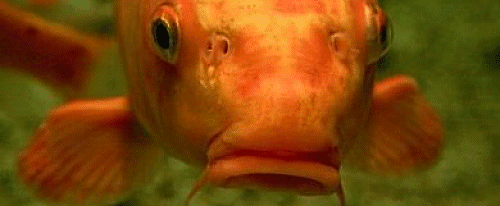
Topical treatments
For skin infections, cuts and grazes
When topical treatments are used it is important to thoroughly debride the affected area and remove all necrotic tissue and debris from the lesion. This removes a source of continuing infection and helps the healing process to start. Where there are large areas of ulceration, topical treatments may assist osmotic stress by sealing the area against water ingress, albeit for only a short time.
Thoroughly clean the lesion
 The fish really needs to be sedated for this procedure (see anaesthetics pages). The lesion is thoroughly cleaned using an antiseptic solution such as povodine-iodine or similar using a cotton bud or small swab of cotton wool. If there are any infected scales these should be removed, otherwise the scale pocket will act as a continuing reservoir of infection. In the case of fin rot it may be necessary to trim the infected area back to healthy tissue using a pair of sharp, sterile scissors. The fish really needs to be sedated for this procedure (see anaesthetics pages). The lesion is thoroughly cleaned using an antiseptic solution such as povodine-iodine or similar using a cotton bud or small swab of cotton wool. If there are any infected scales these should be removed, otherwise the scale pocket will act as a continuing reservoir of infection. In the case of fin rot it may be necessary to trim the infected area back to healthy tissue using a pair of sharp, sterile scissors.
When the lesion is clean it should be dried with a tissue and covered with waterproof cream or ointment. There are proprietary products available. I tend to use Orabase from Boots the chemist. The secret with this product is to only use a small amount but spread it thinly using a wetted finger. The thinner it is spread, the longer it stays in place.
Avoid repeated debridement
Topical treatments can be successful on their own if the infection is not too severe. They can also be used in conjunction with bath treatments or antibiotics injections for enhanced effects. The procedure may need to be repeated again a day or two later, but repeated debridement of the lesion should be avoided as this may “wipe” away new skin growth. Fish integument heals by a thin layer of skin cells migrating across the lesion from the adjacent healthy tissue.
If, after the initial treatment it is felt that the fish would benefit from further treatment to the affected area, the lesion should be lightly swabbed with an antiseptic solution and the top dressing applied very carefully
 Assuming that the lesion was thoroughly cleaned initially one would expect to see some signs of improvement by way of reduced inflammation or signs of new skin growth within 5 –7 days. If after this time the lesion shows no sign of healing a course of appropriate antibiotics may well be needed. Assuming that the lesion was thoroughly cleaned initially one would expect to see some signs of improvement by way of reduced inflammation or signs of new skin growth within 5 –7 days. If after this time the lesion shows no sign of healing a course of appropriate antibiotics may well be needed.
|





